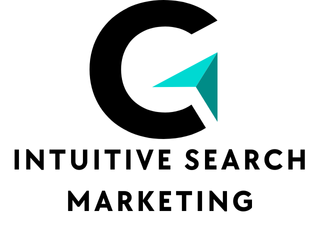Understanding Google Ads Fundamentals
In the world of digital marketing for fitness studios, Google Ads stands out as a powerful tool for reaching potential clients. With an approach rooted in PPC advertising, Google Ads allows businesses to pay only when someone clicks on their ad—a cost-effective method for boutique fitness studios to maximize their advertising budget.
Google Ads basics revolve around three core components: keywords, ad copy, and target audience. Selecting the right keywords ensures that your ads appear to users searching for relevant terms, while compelling ad copy grabs attention and drives clicks. A well-defined target audience helps tailor campaigns to the specific demographics most likely to engage with your fitness services.
Also read : Maximizing TikTok: Innovative Strategies for UK Skincare Brands to Showcase Their Products
Google Ads provides fitness studios with competitive advantages compared to other digital marketing platforms. The platform offers detailed analytics, enabling marketers to track performance metrics and optimize campaigns continuously. Additionally, the vast audience network from Google’s search engine ensures broad reach and targeting capabilities, making it a superior choice for local studios aiming to attract nearby clientele.
In comparison to social media advertising or email campaigns, Google Ads’ search intent targeting prioritizes users actively seeking fitness solutions, offering enhanced precision and potential for higher conversion rates. Embracing these Google Ads basics can significantly boost visibility and client acquisition.
Have you seen this : Effortlessly design impactful video promos online today
Defining Your Target Audience
Understanding your audience segmentation is crucial in the competitive boutique fitness industry. Recognising the demographics that frequent fitness establishments can enable you to tailor your strategies effectively. Using tools like Google Analytics and keyword research tools can provide deep insights into these demographics.
To maximise reach, developing detailed customer personas is essential. These personas are fictional characters that represent the key traits of your ideal clients, guiding marketing efforts to address specific needs. For instance, is your audience comprised of young professionals seeking high-intensity workouts, or do they lean towards older adults interested in low-impact exercises? By defining these personas, you create more precise advertising content that resonates with each segment’s interests and aspirations.
When using Google Analytics, you can gather data on visitor behaviour, age, and gender, which are integral to constructing accurate customer personas. Similarly, keyword research tools help identify terms or phrases your potential clients frequently search, allowing you to tune your campaigns accordingly. Through these strategies, you can ensure that your services are aligned with the expectations and desires of your audience, fostering a stronger connection and improving customer engagement in the fitness industry.
Crafting Effective Ad Copy
In the realm of fitness marketing strategies, persuasive messaging is essential. A well-crafted ad copy can attract the right audience and boost engagement for fitness services. To write compelling ad copy, incorporating several principles is crucial.
The foundational step in ad copy writing is understanding your audience’s motivations. Knowing what drives them allows for targeted persuasive messaging. This includes creating a narrative your audience can relate to, thereby establishing a connection between the service and their needs. For instance, UK boutique fitness studios often use personalized stories to convey how their services have transformed lives.
Another key principle is the use of a strong call-to-action (CTA). This prompts potential clients to take immediate action, such as signing up for a trial class or booking a consultation. An effective CTA is clear, concise, and offers a direct benefit to the reader, ensuring there is no ambiguity in what steps they need to follow next.
Integrating value propositions within your ad copy highlights the unique benefits your service offers. This might include exclusive classes, personalized training, or experienced trainers, enticing potential clients by illustrating what sets your service apart. Successful examples from UK studios often showcase these elements prominently, achieving higher engagement levels.
Strategic Keyword Selection
Creating a focused keyword strategy is critical for success, especially when working within the niche market of fitness. A solid starting point is to conduct thorough keyword research. By identifying effective keywords, your content can reach its intended audience with precision. Tools like Google Keyword Planner are invaluable for this process, providing data on search volumes and competition levels. Utilising these insights allows for the selection of targeted keywords that align with user interests and search behaviour.
When developing an SEO for fitness strategy, it’s essential to understand the distinction between long-tail and short-tail keywords. Long-tail keywords, although less frequently searched, often yield higher conversion rates. They are particularly beneficial in the boutique fitness context, where specificity can set you apart. In contrast, short-tail keywords are more competitive due to their broad nature, potentially leading to increased exposure but less targeted traffic.
Employ these methods to refine your keyword strategy:
- Analyse competitors for keyword gaps.
- Focus on user intent to match relevant content with search queries.
- Regularly update keywords to adapt to market trends.
Implementing these practices will substantially enhance your visibility and engagement within the fitness niche.
Budget Management for Google Ads
Understanding how to manage a budget allocation effectively is crucial for boutique fitness studios seeking to leverage Google Ads. Setting a realistic budget begins by assessing how much you are willing to spend relative to your advertising goals. Start by examining the cost per click (CPC) pricing, which varies based on keywords in the fitness industry. A higher CPC means increased visibility but requires a well-thought-out ad spending strategy to ensure a positive return on investment (ROI).
Setting a Realistic Budget
For boutique fitness studios, a realistic budget usually balances between aggressive marketing and maintaining profitability. If your studio aims to attract a niche clientele, focus on specific keywords that directly relate to your unique offerings, potentially reducing CPC while effectively reaching your audience.
Understanding Cost-per-Click (CPC)
CPC pricing influences how much you pay when someone clicks on your ad. It is vital to track CPC so that your budget remains intact and generates maximum ROI. Knowing the average CPC in your sector helps refine your ad spending strategy, allowing you to adjust bids to optimize performance.
Advanced techniques like location targeting, scheduling, and audience segmentation can further refine your ad spending strategy, maximizing visibility without exceeding your budget. These adjustments ensure that each advertising penny is well spent and continually aligned with your boutique studio’s marketing objectives.
Performance Tracking and Optimization
Monitoring the success of campaigns relies heavily on understanding key performance indicators (KPIs). These metrics help evaluate whether a campaign is achieving its objectives. KPIs like conversion rates, click-through rates, and return on ad spend are integral to assessing campaign effectiveness. They offer insights into how well the target audience is engaging with the advertisement.
To harness the power of performance metrics, it is crucial to employ sophisticated tools. Platforms such as Google Analytics provide comprehensive campaign analytics, allowing marketers to dissect performance data and gain a granular understanding of user interactions. These insights facilitate data-driven decisions, ensuring marketing efforts are optimized for maximum impact.
Ad optimization techniques are pivotal in refining campaigns based on gathered performance analytics. By analyzing metrics like ad frequency and audience demographics, marketers can tweak their campaigns to resonate better with their target market. For instance, adjusting ad placements or altering messaging might enhance engagement.
Furthermore, tracking tools provide the ability to conduct A/B testing. This technique involves running two variations of an ad to determine which performs better. This practical approach aids marketers in pinpointing effective strategies, ultimately resulting in enhanced campaign performance.
Case Studies of Successful Google Ads Campaigns
In the competitive world of fitness marketing, success stories provide invaluable insights. UK boutique fitness studios have creatively utilised case studies to showcase thriving Google Ads campaigns. These examples highlight the effectiveness of tailored ads in achieving marketing objectives.
Best Practices in Fitness Marketing
One boutique studio significantly increased its membership by targeting specific audience segments with offerings customised to local interests. By focusing on what resonated with their community, the studio maximised its return on investment. A standout lesson learned from this case study is the importance of personalisation. It helped in crafting ads that genuinely connected with the audience.
In another example, a studio leveraged video ads, demonstrating workouts and member testimonials. This engaging content led to higher click-through rates, exemplifying how high-quality visuals can enhance campaign performance. The key takeaway here is the power of visual storytelling.
Applying Insights
To leverage these insights for your campaigns, focus on refining your targeting to match audience profiles. Secondly, experiment with different ad formats to find what delivers the best results. Lastly, consistently review performance metrics to tweak strategies and ensure alignment with business goals. A data-driven approach ensures long-term success in Google Ads campaigns.
Competitive Analysis in the Fitness Industry
Understanding the intricacies of competitive research is crucial in the dynamic fitness industry. Conducting a detailed market analysis helps businesses tailor their Google Ads campaigns effectively. By scrutinising competitors’ strategies, especially in the boutique fitness space, businesses can identify what proves successful and adapt accordingly.
Tools for Competitive Analysis
To enhance your market analysis, both free and paid tools are available. These tools provide insights into competitors’ keyword usage, ad placements, and audience engagement. Some popular options include SEMrush, Ahrefs, and Google Keyword Planner. These applications aid in identifying trends and offer data-driven recommendations to refine your advertising strategy.
Identifying Industry Trends
Staying abreast of the latest fitness industry trends is vital for maintaining competitiveness. This involves analysing emerging workout styles, consumer preferences, and technological advancements in fitness equipment. Leveraging this knowledge allows businesses to position themselves strategically within the market.
Emulating Success
Observing what works for competitors can inform strategic decisions. This includes analysing their ad creatives, promotions, and customer engagement approaches. Understanding these elements can equip your business with the insights needed to launch successful campaigns tailored to specific audience segments, ensuring you remain relevant and innovative in a swiftly evolving market.








